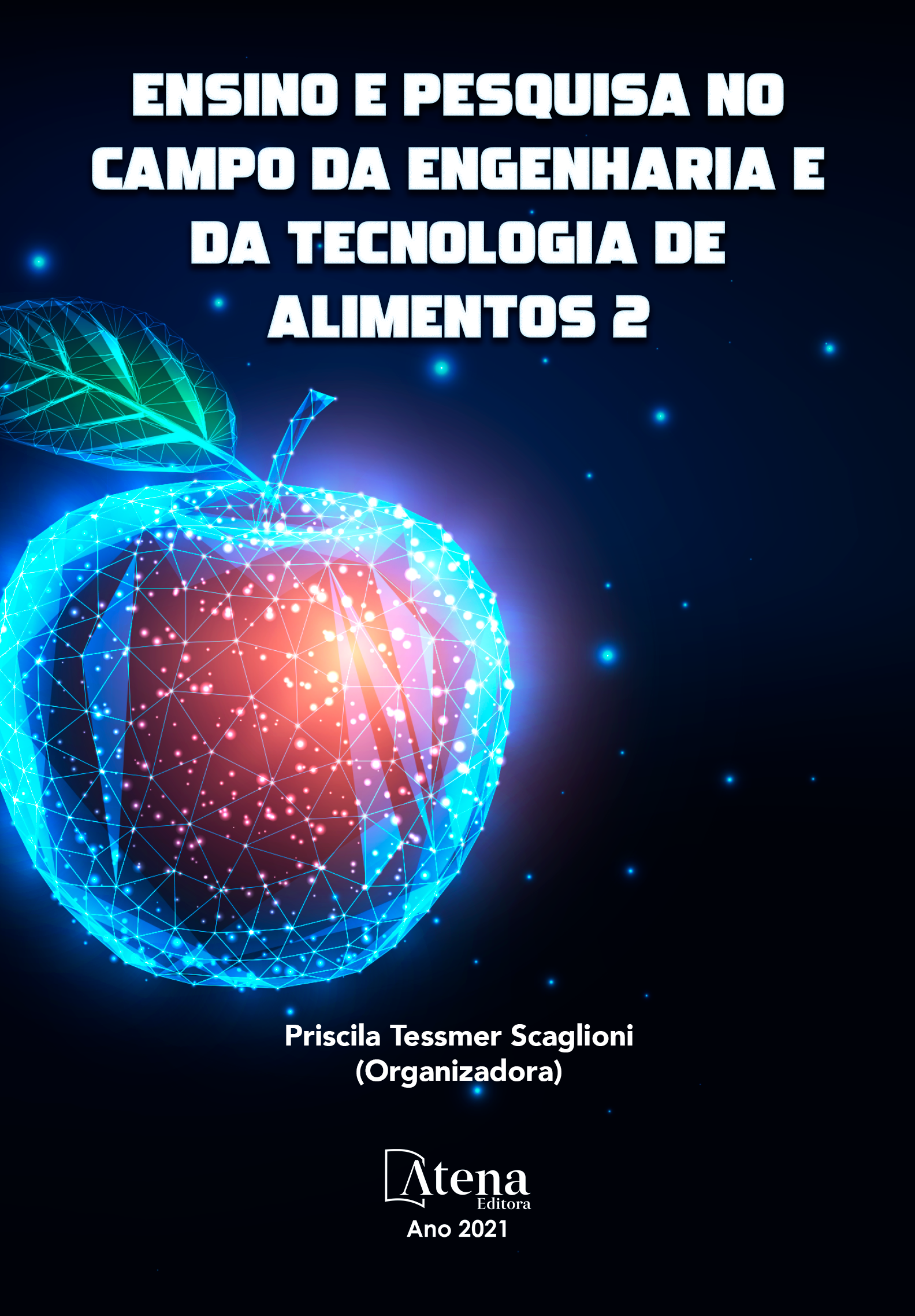
AVALIAÇÃO TECNOLÓGICA DE BOLOS ISENTOS DE GLÚTEN E LEITE ELABORADOS COM FARINHAS DE ARROZ E BERINJELA
Objetivou-se avaliar a influência da substituição parcial da farinha de arroz parboilizado (FAP) por farinha de berinjela (FB), nas características tecnológicas de formulações de bolos isentas de glúten e sem adição de leite. Foram elaboradas cinco formulações com substituição parcial da FAP por FB e adição de polvilho doce, nas seguintes proporções: F1 (85:0:15%); F2 (80:5:15%); F3 (75:10:15%); F4 (70:15:15%) e F5 (65:20:15%), respectivamente, mantendo-se constante a adição dos demais ingredientes. Avaliou-se a perda de peso após o forneamento (PPAF), o grau de umidade, a atividade de água (Aa), o volume específico (VE), a dureza e os parâmetros de cor da crosta e do miolo dos bolos. Os resultados demonstraram que o aumento da adição de FB na formulação reduziu em 51% à PPAF, que variou entre 2,57 g a 3,89 g e os valores do VE, que variou entre 3,45 cm3.g-1 a 3,75 cm3.g-1. No entanto, houve aumento nos teores de umidade, que variaram entre 10,47% a 12,36%, nos valores de Aa, que variaram entre 0,60 e 0,69 e nos valores de dureza, que variaram entre 8,63 N a 25,92 N, nas diferentes formulações. Além de intensificar a coloração amarelo-escuro da crosta e do miolo dos bolos, proporcional à adição de FB. A elaboração de bolos com substituição da FAP por até 5% de FB, resultou em características tecnológicas aceitáveis, não influenciando negativamente na PFAF, no VE, na textura e nos parâmetros de cor dos bolos, sendo uma alternativa para dietas isentas de glúten e leite.
AVALIAÇÃO TECNOLÓGICA DE BOLOS ISENTOS DE GLÚTEN E LEITE ELABORADOS COM FARINHAS DE ARROZ E BERINJELA
-
DOI: 10.22533/at.ed.2672105019
-
Palavras-chave: Solanum melongena, livre de glúten, alimento sem leite, muffins, panificação.
-
Keywords: Solanum melongena, gluten-free, milk-free food, muffins, bakery
-
Abstract:
This study aims to evaluate the influence of the partial replacement of parboiled rice flour (PRF) by eggplant flour (EF) in the technological characteristics of gluten-free and milk-free cake formulations. We prepared five formulations, with the replacement of PRF by EF and the addition of tapioca flour in the respective proportions: F1 (85:0:15%); F2 (80:5:15%); F3 (75:10:15%); F4 (70:15:15%) and F5 (65:20:15%), while maintaining the constant addition of other ingredients. We assessed the weight loss after baking (WLAB), the moisture content, the water activity (WA), the specific volume (SV), the hardness, and the color parameters of the cakes' crusts and crumb. The results indicated that the increased amount of EF in the formulation reduced the WLAB by 51%, which ranged from 2.57 g to 3.89 g, and the SV values, ranging from 3.45 cm3.g-1 to 3.75 cm3.g-1. However, across the different formulations, there was an increase in the moisture content, WA, and hardness values, ranging from 10.47% to 12.36%, from 0.60 to 0.69, and from 8.63 N to 25.92 N, respectively. We also observed the intensification of the dark yellow color in the crusts and crumb of the cakes, which was proportional to the addition of EF. The preparation of cakes with the replacement of PRF by up to 5% of EF resulted in acceptable technological characteristics. It did not negatively influence the WLAB, the SV, the texture, or the color parameters, which confirms it is a great option for gluten-free and milk-free diets.
-
Número de páginas: 13
- Lucieli Baioco Rolim
- Paula Fernanda Pinto da Costa
- Leomar Hackbart da Silva


